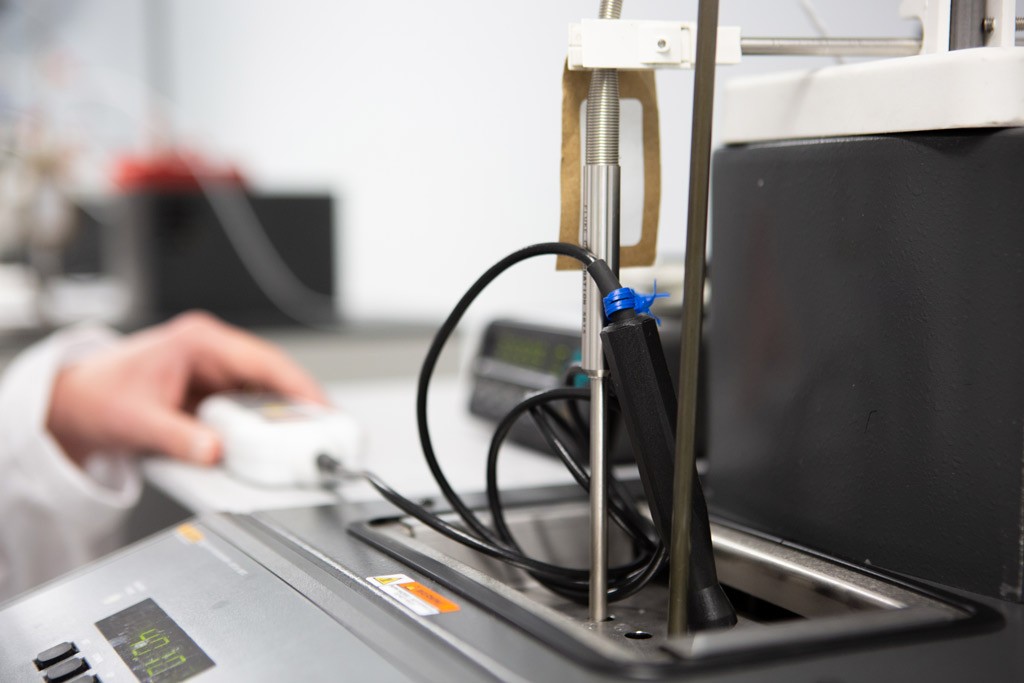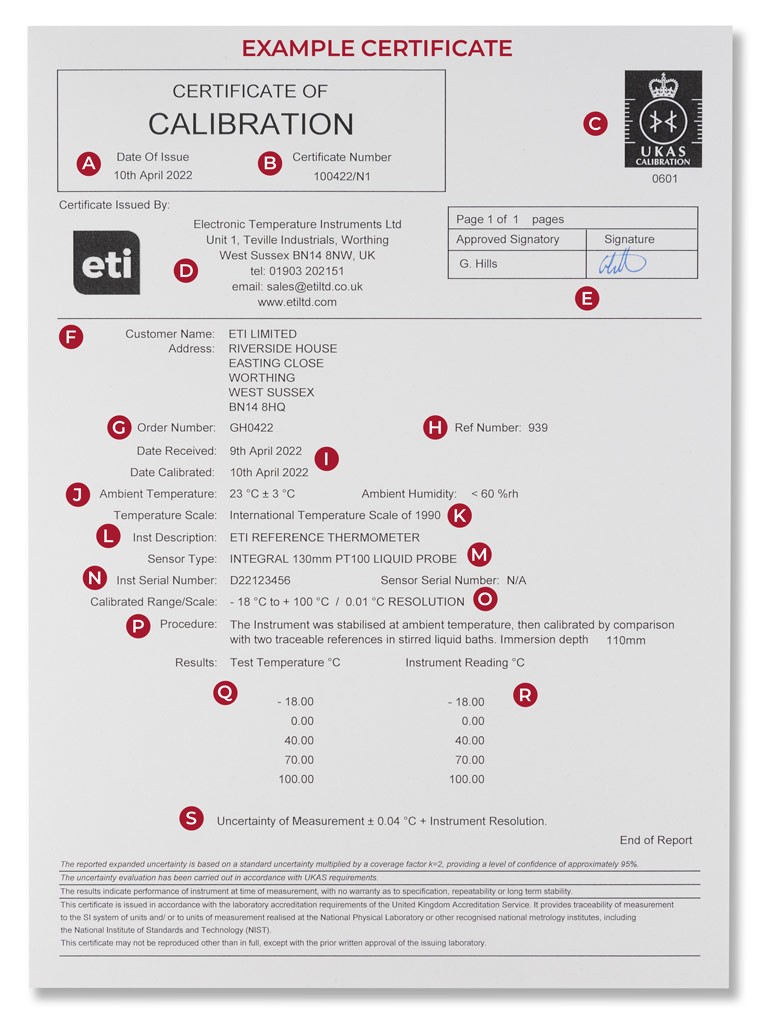What is a Calibration Certificate & Do I Need One?

What is a calibration certificate? Why do you need it? Is it a legal requirement? We answer all of these questions and more to help you understand everything you need to know about calibration certificates.
We also took a look at one of our UKAS certificates to break down what everything on it really means.
What is a calibration certificate?
A calibration certificate is an official document to show that your thermometer has undergone a calibration test in an accredited laboratory. The test date, method and results are shown on the certificate.
The calibration test compares your thermometer measurements with a traceable device or reference thermometer.
This documentation proves the accuracy of your thermometer. If the results show that the thermometer is inaccurate, it will need recalibrating. You will receive fresh documentation to show this.
Are calibration certificates a legal requirement?
Calibration certificates are not a legal requirement in the UK. Within catering applications, your HACCP plan will determine how and when your business should calibrate your thermometers.
However, a calibration certificate is the only legal document that proves your equipment is accurate. There are several benefits to this:
- A calibration certificate can be used in court if a health and safety issue relating to unsafe temperature occurs.
- Calibration certificates are useful for EHO visits and other inspections or audits.
- Ensuring your thermometers are calibrated to a high level of accuracy will preserve the quality and safety of your temperature checks.
What does traceability mean?
When a thermometer undergoes calibration, its readings are checked against a reference thermometer. The reference thermometer must have already had a calibration test using an even higher standard than the one currently being done.
Every time a device has a calibration test using a thermometer that has been calibrated to a higher standard, it forms a chain. When this chain is unbroken and leads back to the highest-level reference thermometer in a national calibration centre (or equivalent) it becomes traceable.
What is UKAS Calibration?
UKAS is the National Accreditation Body for the United Kingdom. When UKAS accredits a laboratory, its tests are completed to the highest standard in the country.
Many other countries have their own accreditation bodies that manage their national standards. NIST is responsible for this in the U.S.
At ETI, we have a UKAS accredited calibration laboratory for temperature and humidity measurements. Customers can send instruments to us for UKAS calibration.
What’s the difference between a traceable certificate and a UKAS certificate?
A traceable certificate means that your thermometer has been tested against a reference thermometer within the traceability chain.
A UKAS certificate means that your thermometer has been tested in a UKAS accredited laboratory.
A traceable certificate is often satisfactory for EHOs and other inspectors who may want to check your calibration procedures during visits. A UKAS certificate will give you additional peace of mind that your thermometer has been calibrated using the highest standards within the UK.
UKAS calibration certificate breakdown
Below is an example certificate from our UKAS laboratory. Read the key to learn more about each section.

A. The date the calibration certificate was issued.
B. The unique certificate number.
C. The official UKAS calibration logo; this shows that the certificate is traceable to the UK’s national standard. The number below the logo is the laboratory’s unique code accredited to them by UKAS. The business’ accreditation details can be found on the UKAS website.
D. Address and contact details of the calibration laboratory.
E. Name and signature of the person who completed the calibration.
F. Name and address of the customer.
G. Order number.
H. Reference number.
I. Date the instrument arrived in the laboratory and the date the calibration was completed.
J. Room temperature and humidity within the laboratory during the test.
K. The international temperature scale of 1990 – (ITS-90) is a scale of temperatures used by laboratories to calibrate thermometers. The temperatures are determined by keeping substances, such as water, mercury and tin, in conditions where they will maintain a specific temperature. Using these standards allows laboratories to be sure about the temperatures they are using to test the thermometers, providing a high level of accuracy.
L. Name of the thermometer being calibrated.
M. Type of sensor being calibrated.
N. Serial numbers of the instrument and the sensor being calibrated.
O. Range requested for calibration by the customer.
P. Method and equipment used to calibrate the thermometer.
Q. Temperature or humidity used to test the thermometer.
R. If the instrument readings and test temperatures are different, the thermometer can be recalibrated if possible and required. The readings in this example are the same, so no action needs to be taken.
S. Even with the most expensive equipment and controlled environments, measurements cannot always be 100% accurate. The uncertainty of doubt accounts for this possibility. If the uncertainty of measurement is ± 0.04 °C the results of the test may be 0.04 °C more or less than the temperatures stated in the certificate. The resolution of the instrument also needs to be added to this. So if the uncertainty of measurement is ± 0.04 °C and the instrument resolution is 0.01, the total uncertainty of measurement would be ±0.05 °C.
You might also like:
How to Use a Food Thermometer Accurately
ETI Department Spotlight: Quality Assurance